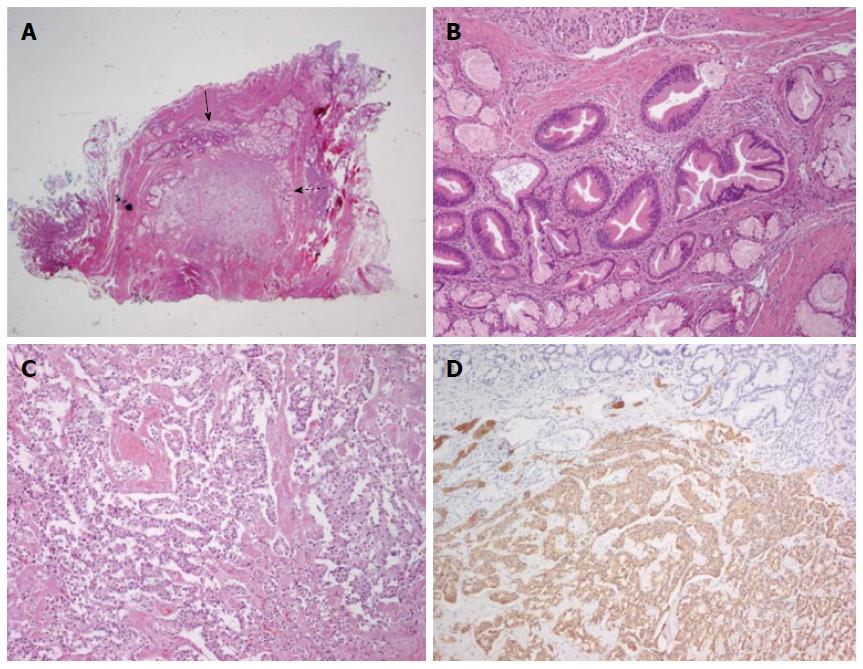Copyright
©The Author(s) 2016.
World J Gastroenterol. Apr 7, 2016; 22(13): 3687-3692
Published online Apr 7, 2016. doi: 10.3748/wjg.v22.i13.3687
Published online Apr 7, 2016. doi: 10.3748/wjg.v22.i13.3687
Figure 3 The protruding whitish mass lesion (second papillectomy tissue, Figure 2D) was composed of two lesions that differed in their histological characteristics.
Tubular adenoma (solid arrow) and NET [Dotted arrow, hematoxylin-eosin (HE) staining, magnification × 4; A]. The tubular adenoma lesion exhibited round-to-oval enlarged glands with stratified epithelial cells (HE staining, magnification × 100; B). The NET showed cord-like arrangement of monotonous tumor cells (HE staining, magnification × 100; C). Immunohistochemistry showed that the tumor cells were positive for synaptophysin (magnification × 100; D).
- Citation: Lee SH, Lee TH, Jang SH, Choi CY, Lee WM, Min JH, Cho HD, Park SH. Ampullary neuroendocrine tumor diagnosed by endoscopic papillectomy in previously confirmed ampullary adenoma. World J Gastroenterol 2016; 22(13): 3687-3692
- URL: https://www.wjgnet.com/1007-9327/full/v22/i13/3687.htm
- DOI: https://dx.doi.org/10.3748/wjg.v22.i13.3687









